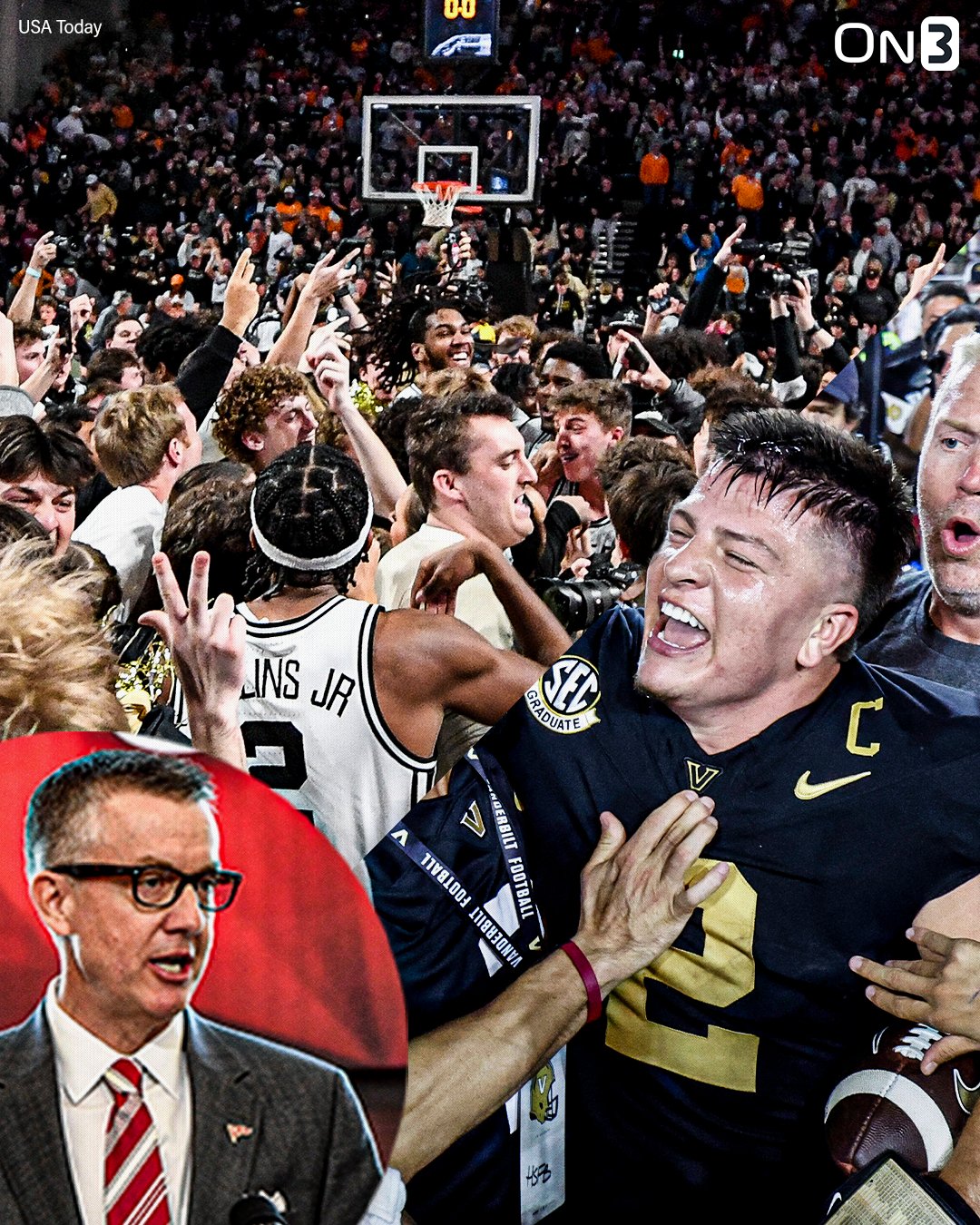Alabama AD Greg Byrne Suggests Forfeits as a Solution to Court and Field Storming
Few traditions in college sports are as exciting and chaotic as a court or field storming. When a home team pulls off a massive upset or clinches a historic win, thousands of students and fans rushing onto the playing surface has become an almost expected sight. However, this tradition has also raised significant safety concerns, leading to ongoing discussions about how to prevent dangerous situations.
Alabama Athletic Director Greg Byrne recently made headlines by suggesting one of the most drastic measures yet to curb these incidents—automatic forfeits for the home team if their fans storm the field or court.
“If we said that the home team, if they storm the field or the court, they’re going to lose the game right then and there, that will stop it,” Byrne said.
His proposal immediately sparked debate across the college sports landscape. Would such a rule actually put an end to storming, or would it simply create an even bigger controversy?
The Growing Issue of Field and Court Storming
Court and field storming has long been a part of college sports, particularly in football and basketball. While fans see it as an exhilarating way to celebrate a big victory, officials, coaches, and administrators see the risks involved.
Some of the biggest concerns include:
- Player and Coach Safety: When thousands of fans rush the field or court, opposing players and coaches can easily become targets for aggression—whether intentional or accidental.
- Fan Injuries: People can be trampled, shoved, or even seriously hurt in the chaos of a storming event.
- Security Challenges: Even with extra law enforcement and security personnel, controlling an excited crowd can be nearly impossible once they decide to rush the playing surface.
Recent incidents have heightened these concerns. In 2023, Duke basketball player Kyle Filipowski was injured during a court storming after a game against Wake Forest. In college football, fans have swarmed the field to take down goalposts, creating both financial and safety concerns for schools.
Byrne’s proposal would introduce an extreme deterrent—one that would change the way college sports handle these traditions.
Would Automatic Forfeits Actually Stop Storming?
Byrne argues that if fans knew their team would immediately lose the game if they stormed the field, they wouldn’t risk it. On the surface, it’s a logical approach. After all, what fan would want to celebrate a win just to have it erased moments later?
However, there are several issues with this idea:
1. Can Schools Realistically Control Fans?
Even with penalties and fines in place, stopping a crowd of thousands of emotional fans from storming is incredibly difficult. If fans are determined to rush the field after a huge victory, there’s only so much stadium security and law enforcement can do.
2. Would the NCAA Actually Enforce This?
The idea of revoking a team’s win due to fan behavior is unprecedented. While the NCAA and individual conferences have levied fines and stadium restrictions, they have never reversed the outcome of a game based on a field storming. This type of rule would require significant approval from conference commissioners, school presidents, and the NCAA itself.
3. The Chaos of Retroactively Changing a Result
Imagine this scenario:
- A top-10 team upsets the No. 1 team in the country at home.
- Fans rush the field in celebration.
- The NCAA or conference officials retroactively change the outcome, giving the win to the losing team.
This would outrage fans, players, and coaches, leading to enormous backlash and controversy. It could also lead to legal challenges, as universities and athletic departments would fight to keep their legitimate wins intact.
4. What Happens in Close Games?
Let’s say a home team wins in overtime by one point, and their fans storm the field. Under Byrne’s suggestion, they would immediately lose. Would teams start calling timeouts to clear fans before the game officially ends? What if a handful of fans rush early, but most stay put? There are too many logistical nightmares involved.
Alternative Solutions to Prevent Storming
While Byrne’s idea is drastic, it does highlight a real issue that needs addressing. Several alternatives have been suggested that might be more practical:
1. Harsher Fines for Schools
Right now, the SEC fines schools $100,000 for a first-time offense, $250,000 for a second offense, and $500,000 for a third offense. Increasing these penalties to seven figures could force universities to invest more in preventative measures.
2. Containment Strategies
Schools could increase security presence and create barrier zones to slow down potential storming attempts. Some venues have experimented with keeping players on the field longer, allowing fans to celebrate without direct interaction.
3. Controlled Celebrations
In professional sports, teams sometimes allow fans onto the field in an organized manner. Could colleges introduce postgame celebrations where students can eventually come onto the court or field—but in a safe, orderly way?
4. Immediate Technical Foul or Yardage Penalty
Instead of an outright forfeit, leagues could impose an automatic technical foul in basketball or a significant yardage penalty in football if fans attempt to storm before the game is officially over. This would prevent early rushing while maintaining fairness in the result.
The Bigger Picture: Balancing Tradition and Safety
Greg Byrne’s suggestion is undoubtedly controversial, but it brings up an important conversation about balancing tradition with player safety. Storming the field or court is an iconic part of college sports culture, and outright banning it through forfeits may feel too extreme.
However, as injuries and security concerns continue to mount, schools and conferences will have to find new ways to control crowds while preserving the energy and excitement of college athletics.
Ultimately, whether or not Byrne’s idea gains traction, one thing is certain—the days of unrestricted field and court storming are numbered, and significant changes are likely coming soon.
